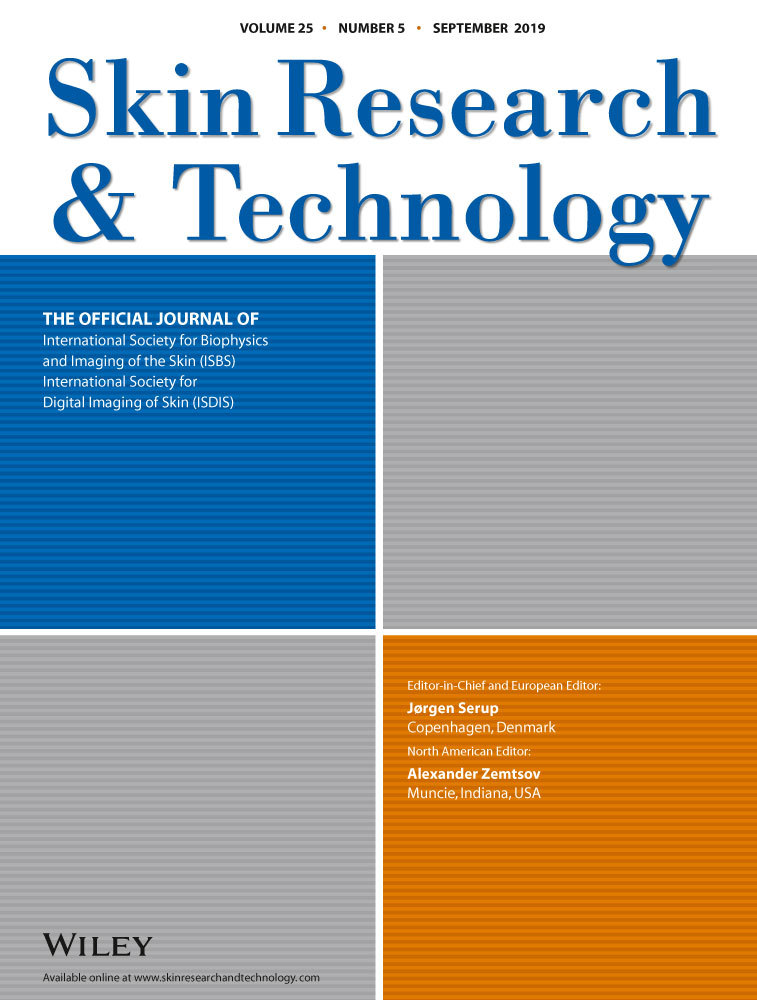Sequential delivery of long-pulsed 755-nm alexandrite laser and long-pulsed 1,064-nm neodymium:yttrium-aluminum-garnet laser treatment for pigmented disorders
Abstract
Background
Long-pulsed (LP) lasers at pulse durations of 1-300 ms have been used to destroy nests of nevi cells by selectively targeting pigment chromophores.
Objective
To evaluate dual-wavelength LP laser-induced tissue reactions.
Methods
The patterns of LP 755-nm alexandrite (Alex) and/or 1064-nm neodymium (Nd):yttrium-aluminum-garnet (YAG) laser-induced tissue reactions were macroscopically evaluated using a tattoo-embedded phantom. Additionally, a pilot in vivo human study was performed for common acquired melanocytic nevus, of which dermoscopic images and high-speed cinematographs were obtained.
Results
Combinations of Nd:YAG and Alex laser treatments at interpulse intervals of 10 or 20 ms generated round to oval zones of photothermal and photoacoustic injury in two distinctive areas containing disintegrated tattoo particles. Treatment at interpulse intervals of 10 or 20 ms between Alex and Nd:YAG pulses elicited lesser degrees of thermal damage to surrounding tissues, compared to treatment at 100 or 200 ms. Immediately after combined LP laser treatment of human nevus lesions in vivo, Nd:YAG-Alex treatment at a 20-ms interpulse interval exhibited more remarkable crusting and erosive appearances than Alex-Nd:YAG treatment.
Conclusion
For treating pigmented disorders, sequential delivery of LP Nd:YAG and Alex pulses at short interpulse intervals of 10-20 ms can effectively destroy nests of pigment chromophores.
CONFLICT OF INTEREST
The authors declare no conflicts of interest.




